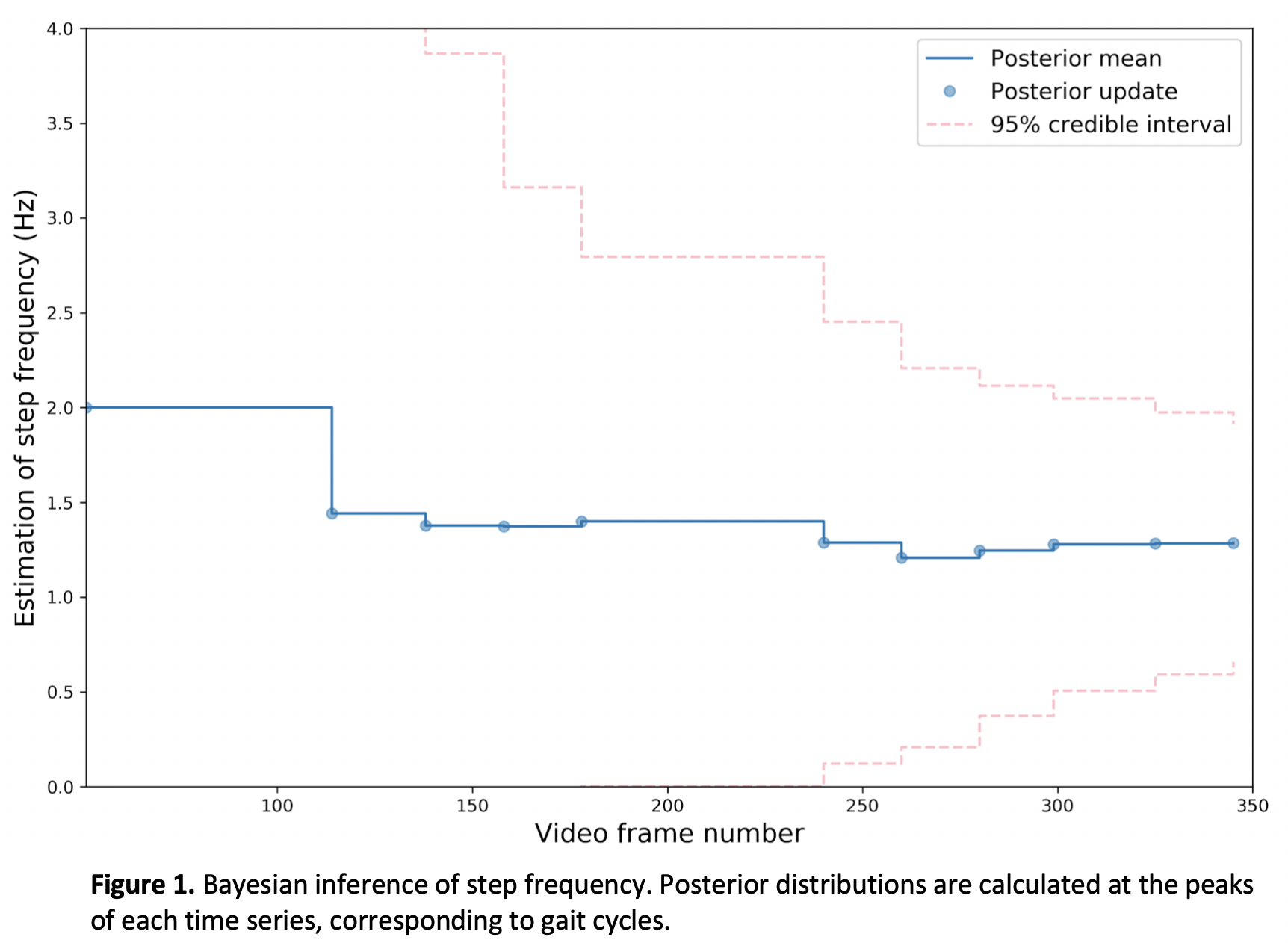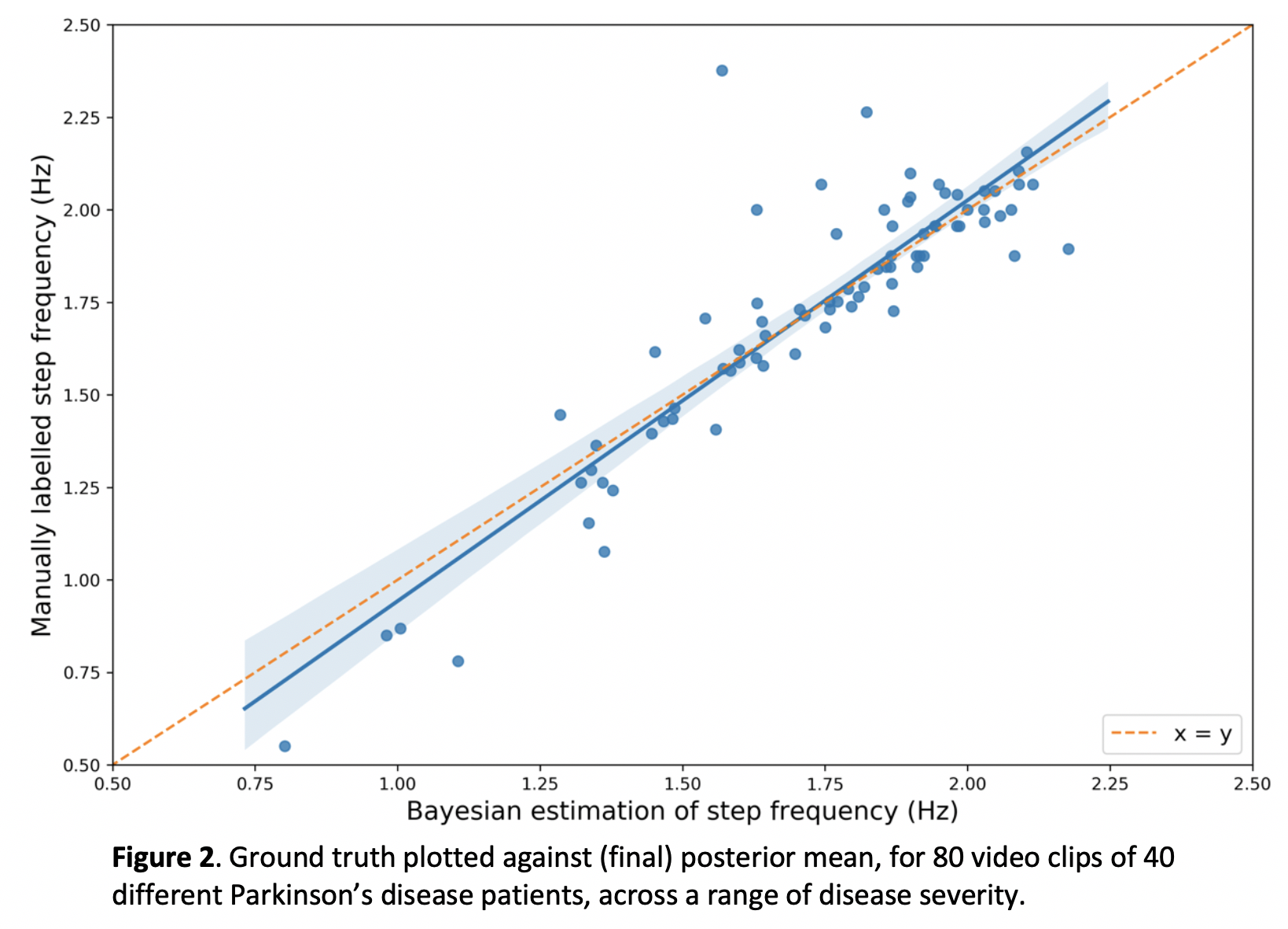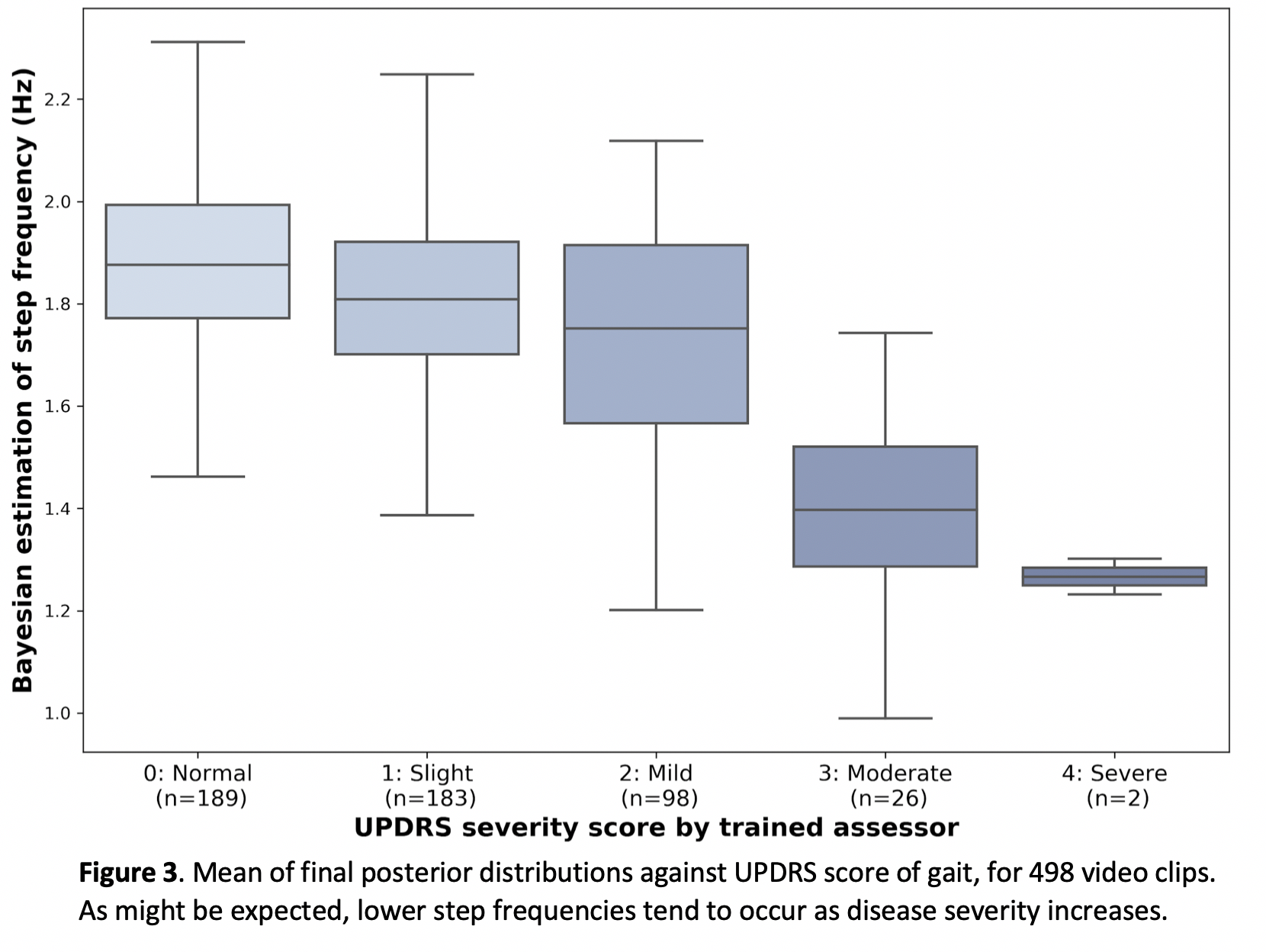Category: Technology
Objective: Walking (gait) is a crucial motor function, and is frequently assessed as a component of clinical examination and subsequent patient management. However, the assessment of gait is often conducted in confined conditions, such as within a corridor or on a ward, and furthermore judgements are typically highly subjective in character, making them variable and unreliable.
Background: Today’s widespread availability of tablets and smartphones allows high quality video to be acquired easily and quickly in clinics. We show that such video, of patients walking up and down a corridor during clinical assessment of the UPDRS (Unified Parkinson’s Disease Rating Scale), can be used to reliably extract step frequency, which correlates inversely with disease severity.
Method: [figure1]
The computer vision technique of pose estimation was used to track body parts throughout a video, and from this extract multiple periodic time series related to gait were extracted. Identification of steps was done using peak detection, optimised for this application. The final estimate of gait step frequency is arrived at by Bayesian estimation using a conjugate prior for normal likelihood with unknown mean and unknown variance.
Results: [figure2]
This work utilised a dataset of videos recorded during motor examinations conducted by trained assessors using the MDS-UPDRS rating scale. For a subset of these videos the step frequency was manually labelled, these labels were used as ground truth to calibrate both the peak detection algorithm and the prior. The method was then applied to the entire dataset of videos, allowing us to correlate step frequencies to the MDS-UPDRS severity ratings assigned by assessors at gait examinations.
[figure3]
Conclusion: Automated analysis of a single monocular video provides good estimation of a key parameter of motor dysfunction. Unlike previous works based on multiple views, or expensive bespoke equipment, our method dovetails with current assessment methods, so is easily integrated into clinical workflows.
To cite this abstract in AMA style:
Y. Peng, G. Morinan, J. O'Keeffe. Bayesian Estimation of Gait Cadence from Monocular Video [abstract]. Mov Disord. 2020; 35 (suppl 1). https://www.mdsabstracts.org/abstract/bayesian-estimation-of-gait-cadence-from-monocular-video/. Accessed December 25, 2025.« Back to MDS Virtual Congress 2020
MDS Abstracts - https://www.mdsabstracts.org/abstract/bayesian-estimation-of-gait-cadence-from-monocular-video/



